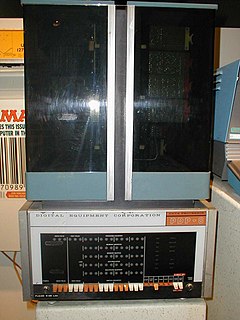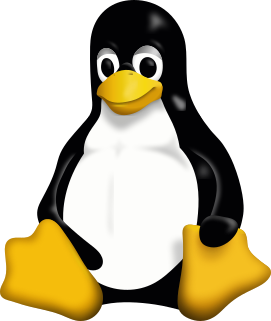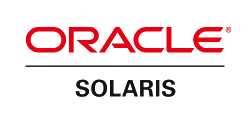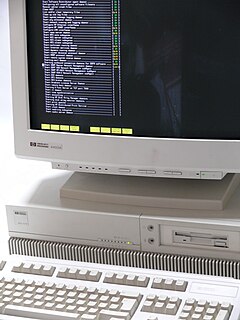This article needs additional citations for verification .(June 2008) (Learn how and when to remove this template message) |
Open systems are computer systems that provide some combination of interoperability, portability, and open software standards. (It can also refer to specific installations that are configured to allow unrestricted access by people and/or other computers; this article does not discuss that meaning).
Interoperability is a characteristic of a product or system, whose interfaces are completely understood, to work with other products or systems, at present or in the future, in either implementation or access, without any restrictions.
Portability in high-level computer programming is the usability of the same software in different environments. The prerequirement for portability is the generalized abstraction between the application logic and system interfaces. When software with the same functionality is produced for several computing platforms, portability is the key issue for development cost reduction.
An open standard is a standard that is publicly available and has various rights to use associated with it, and may also have various properties of how it was designed. There is no single definition and interpretations vary with usage.
The term was popularized in the early 1980s, mainly to describe systems based on Unix, especially in contrast to the more entrenched mainframes and minicomputers in use at that time. Unlike older legacy systems, the newer generation of Unix systems featured standardized programming interfaces and peripheral interconnects; third party development of hardware and software was encouraged, a significant departure from the norm of the time, which saw companies such as Amdahl and Hitachi going to court for the right to sell systems and peripherals that were compatible with IBM's mainframes.

Unix is a family of multitasking, multiuser computer operating systems that derive from the original AT&T Unix, development starting in the 1970s at the Bell Labs research center by Ken Thompson, Dennis Ritchie, and others.

Mainframe computers or mainframes are computers used primarily by large organizations for critical applications; bulk data processing, such as census, industry and consumer statistics, enterprise resource planning; and transaction processing. They are larger and have more processing power than some other classes of computers: minicomputers, servers, workstations, and personal computers.

A minicomputer, or colloquially mini, is a class of smaller computers that was developed in the mid-1960's and sold for much less than mainframe and mid-size computers from IBM and its direct competitors. In a 1970 survey, The New York Times suggested a consensus definition of a minicomputer as a machine costing less than US$25,000, with an input-output device such as a teleprinter and at least four thousand words of memory, that is capable of running programs in a higher level language, such as Fortran or BASIC. The class formed a distinct group with its own software architectures and operating systems. Minis were designed for control, instrumentation, human interaction, and communication switching as distinct from calculation and record keeping. Many were sold indirectly to original equipment manufacturers (OEMs) for final end use application. During the two decade lifetime of the minicomputer class (1965–1985), almost 100 companies formed and only a half dozen remained.
The definition of "open system" can be said to have become more formalized in the 1990s with the emergence of independently administered software standards such as The Open Group's Single UNIX Specification.
The Open Group is an industry consortium that seeks to "enable the achievement of business objectives" by developing "open, vendor-neutral technology standards and certifications". It has over 625 members and provides a number of services, including strategy, management, innovation and research, standards, certification, and test development. It was established in 1996 when X/Open merged with the Open Software Foundation.
The Single UNIX Specification (SUS) is the collective name of a family of standards for computer operating systems, compliance with which is required to qualify for using the "UNIX" trademark. The core specifications of the SUS are developed and maintained by the Austin Group, which is a joint working group of IEEE, ISO JTC 1 SC22 and The Open Group. If an operating system is submitted to The Open Group for certification, and passes conformance tests, then it is deemed to be compliant with a UNIX standard such as UNIX 98 or UNIX 03.
Although computer users today are used to a high degree of both hardware and software interoperability, in the 20th century the open systems concept could be promoted by Unix vendors as a significant differentiator. IBM and other companies resisted the trend for decades, exemplified by a now-famous warning in 1991 by an IBM account executive that one should be "careful about getting locked into open systems". [1]
However, in the first part of the 21st century many of these same legacy system vendors, particularly IBM and Hewlett-Packard, began to adopt Linux as part of their overall sales strategy, with "open source" marketed as trumping "open system". Consequently, an IBM mainframe with Linux on IBM Z is marketed as being more of an open system than commodity computers using closed-source Microsoft Windows—or even those using Unix, despite its open systems heritage. In response, more companies are opening the source code to their products, with a notable example being Sun Microsystems and their creation of the OpenOffice.org and OpenSolaris projects, based on their formerly closed-source StarOffice and Solaris software products.

The Hewlett-Packard Company or Hewlett-Packard was an American multinational information technology company headquartered in Palo Alto, California. It developed and provided a wide variety of hardware components as well as software and related services to consumers, small- and medium-sized businesses (SMBs) and large enterprises, including customers in the government, health and education sectors. In 2015, it was split into two separate companies, HP Inc. and Hewlett Packard Enterprise.

Linux is a family of open source Unix-like operating systems based on the Linux kernel, an operating system kernel first released on September 17, 1991, by Linus Torvalds. Linux is typically packaged in a Linux distribution.

Open-source software (OSS) is a type of computer software in which source code is released under a license in which the copyright holder grants users the rights to study, change, and distribute the software to anyone and for any purpose. Open-source software may be developed in a collaborative public manner. Open-source software is a prominent example of open collaboration.









